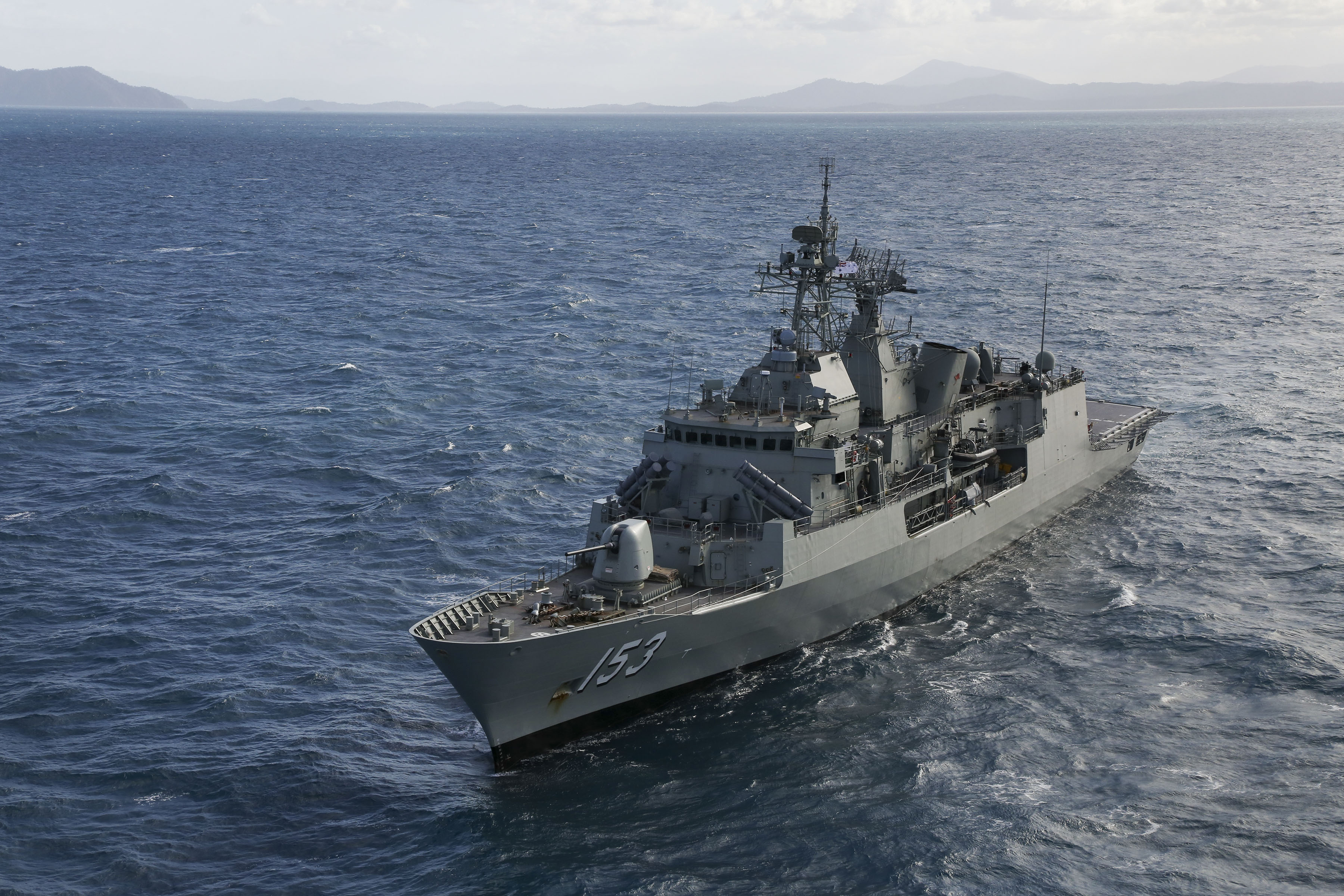We're using highly sensitive superconductors to develop mini antennas for the Royal Australian Navy.
We’re looking to replace the large antennas, like you see here on the HMAS Stuart, with something smaller – around the size of Coca Cola can. Image credit: Commonwealth of Australia, Department of Defence
Everybody knows that good things come in small packages. That might help explain our fascination/obsession with pint-sized versions of things: tiny baby clothes, kittens, teacup pigs, mini burgers… The list goes on.
But compact things aren’t always cute and can have other merits. Like, say if you need to be stealthy to avoid being spotted by opponents out at sea.
That’s one of the reasons why we’ve been awarded funding through the Australian Department of Defence’s Concept Technology Demonstrator (CTD) program, to develop mini antennas for the Royal Australian Navy.
At the moment Navy ships require dozens of large and heavy antennas to detect signals, each spaced metres apart from one another around the ship.
We’re looking to replace these with a small number of radio frequency antennas that are much more sensitive, lightweight, low-noise and as small as a Coca Cola can. The new technology aims to give the Navy greater stealth, safety, new functionality and cost savings.
By applying this technology, we will increase antenna receiver sensitivity to a level approaching the quantum limit while increasing the bandwidth at the same time.
It has the potential to replace many conventional antennas used to date and could also be suitable for unmanned aerial vehicles (or drones).
The project was announced by the Australian Department of Defence as the flagship project, securing the largest proportion of funding through the latest round in the CTD program. The program supports projects that have the potential to enhance the nation’s defence capabilities.
Superconductivity is a versatile technology and we’re applying it to a range of challenges from mineral ore discovery, to making telecommunications more efficient and detecting dangerous substances and contraband using terahertz (THz) imaging.
Find out more about our work with Defence.



20th October 2015 at 5:47 pm
I’m a bit puzzled. Isn’t this sort of research DSTO’s remit usually? Is the government getting rid of DSTO?
14th October 2015 at 4:16 pm
i think it might be easier to produce smaller antennas for X band, Ka Band and UHF band while maintaining the efficiency and the bandwidth. It will be extremely challenging to make coca cola can sized antennas for HF and VHF bands with the efficiency and bandwidth. Also on the other hand researchers must need to keep in mind that the proposed antenna design shall be required to stand harsh environment at the sea. I am extremely interested to see how CSIRO tackles this problem and happy to be part of this research.
13th October 2015 at 10:49 am
This is the new digital radio stack as this can be used underwater and for the finding of human remains as I ground penetration radar. Also on ships to detect drugs on board a vessel.
12th October 2015 at 9:30 pm
Should I be able to access the ADF image library by touching the ship image in the full story page? As I had full acccess.
14th October 2015 at 4:17 pm
It seems to be working for us. Perhaps try a different browser.
12th October 2015 at 4:57 pm
Great concept. Could this technology also benefit the mobile phone industry – meaning less of the huge towers – more smaller ones, giving everyone better signals, even in remote areas?
15th October 2015 at 8:41 am
Hi James, we checked in with the team and here is their response.
“It’s an option we are keen to explore further. The frequencies match, but we’d need to gain a better understanding of the industry’s needs and requirements.”
Cheers,
Adam
CSIRO social media